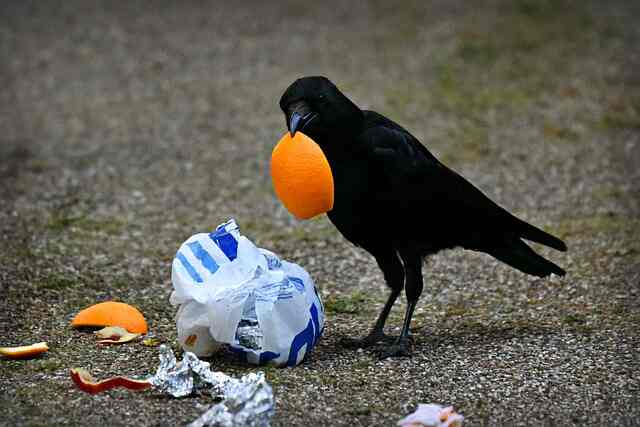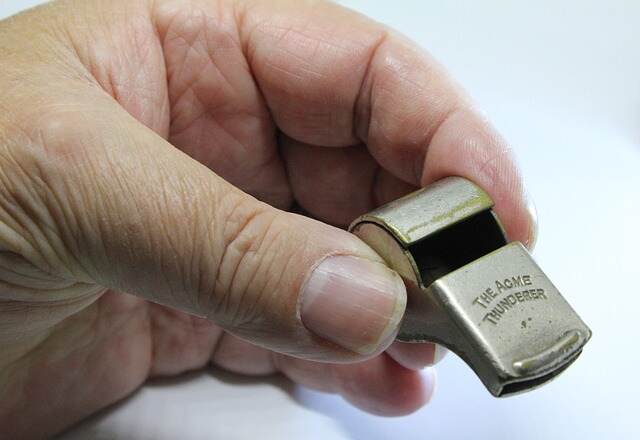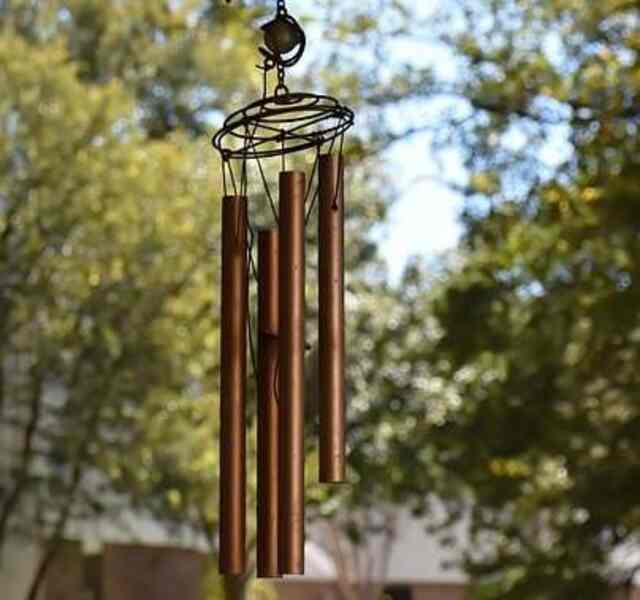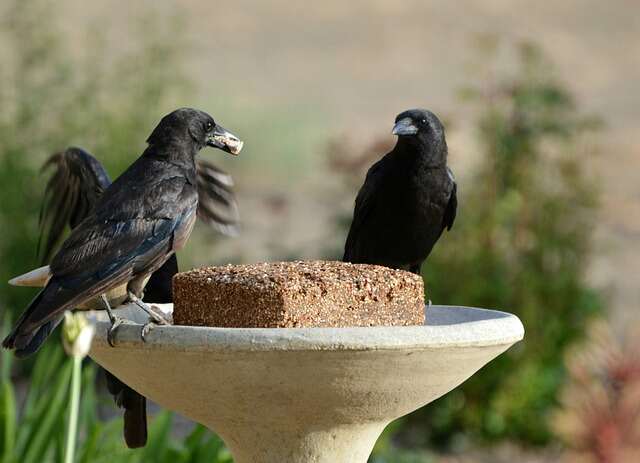Crows are intelligent and fascinating birds, but they can also become a nuisance when they start causing damage to our gardens, crops, and properties. From their noisy cawing to their messy droppings, dealing with crows can be a challenge.
However, there are humane and effective ways to control crow populations and protect your outdoor spaces. In this article, we will share 12 proven strategies to help you get rid of crows and keep them away for good.
Whether you’re a gardener, farmer, or homeowner, these tips will help you manage crow problems in a safe and responsible way.
Table of Contents
- 1 How to Get Rid of Crows
- 1.1 1. Eliminate or Cover Up Potential Food Sources and Trash
- 1.2 2. Choose Crow-Proof Bird Feeders or Store Them Away
- 1.3 3. Take Care of Trees Where Crows Roost
- 1.4 4. Use Unpleasant Noises to Scare Crows Away
- 1.5 5. Utilize Sprinkler Systems to Disrupt Crows’ Roosting Patterns
- 1.6 6. Employ Wind Chimes to Deter Crows
- 1.7 7. Use a Scarecrow or Decoy to Trick Crows
- 1.8 8. Cover Crops, Gardens, or Trash with Bird Netting
- 1.9 9. Protect Seedlings with Fabric Row Covers
- 1.10 10. Cover Corn with Paper Cups or Bags
- 1.11 11. Use Shiny Objects to Create a Visual Distraction
- 1.12 12. Avoid Inhumane or Illegal Methods for Dealing with Crows
- 2 Conclusion
- 3 Frequently Asked Questions
- 3.1 How to get rid of crows but not other birds?
- 3.2 Best poison to kill crows?
- 3.3 How to get rid of crows in tall trees?
- 3.4 How to get rid of crows on roof?
- 3.5 How to make homemade crow repellent?
- 3.6 How do I permanently get rid of crows?
- 3.7 How to get rid of crows in my backyard?
- 3.8 Are crows afraid of owls?
- 3.9 How to get rid of crows banging on windows?
- 3.10 How to get rid of crows nesting in chimney?
- 3.11 What are crows afraid of?
- 3.12 What smell do crows hate?
- 3.13 What does it mean when lots of crows are around?
- 3.14 What is the best crow deterrent?
- 3.15 Will vinegar keep crows away?
- 3.16 Are crows good or bad to have around?
- 3.17 What sound scares crows away?
- 3.18 What does a crow hate the most?
- 3.19 Does WD 40 keep birds away?
- 3.20 Why are crows banging on my roof?
- 3.21 Does aluminum foil scare crows?
- 3.22 How do you defend yourself against a crow?
- 3.23 Can pest control get rid of crows?
- 3.24 What can I spray on garbage bags to keep crows away?
- 4 Author
How to Get Rid of Crows
1. Eliminate or Cover Up Potential Food Sources and Trash
To effectively get rid of crows, it is important to eliminate or cover up their potential food sources and trash. Crows are opportunistic feeders and will take advantage of any available food sources, so removing these sources is a crucial first step.
This can include removing any fallen fruit, pet food, or garbage that may be attracting them. It is also important to secure your trash cans and compost bins to prevent easy access.
Here are some practical tips to help you accomplish this goal:
Remove any sources of food that may attract crows.
Crows are known to be omnivorous, which means they will eat anything from insects and worms to fruits, vegetables, and even small animals like rodents.
If you have a fruit or vegetable garden, pick ripe produce as soon as possible, and remove any fallen fruits or vegetables from the ground.
This will reduce the chances of attracting crows to your property. Additionally, ensure that your pet’s food is not left outside, and keep bird feeders away from areas where crows may congregate.
Secure trash cans and compost bins to prevent easy access.
Crows are notorious scavengers, and they will happily rummage through garbage and compost to find something to eat.
Make sure that your trash cans and compost bins have tight-fitting lids or are secured with bungee cords to prevent crows from accessing them.
You can also consider investing in bird-proof trash cans or compost bins if crows are a persistent problem.
By removing or covering up potential food sources and trash, you can significantly reduce the attractiveness of your property to crows and encourage them to seek out food elsewhere.
| Tip: Use Bungee Cords or Secure Ties |
|---|
| Use bungee cords or other secure ties to keep lids of trash cans and compost bins tightly closed. |

2. Choose Crow-Proof Bird Feeders or Store Them Away
Crows are known to be avid scavengers, and bird feeders can attract them to your property. However, there are ways to prevent them from infesting your bird feeders and making a mess. Here are some tips on choosing crow-proof bird feeders or storing them away:
Benefits of Using Crow-Proof Bird Feeders
- Crow-proof bird feeders have unique designs that prevent crows from accessing the food.
- They can save you money on birdseed because they prevent spillage and wastage.
- They also protect other birds that use the feeder from the aggressive behavior of crows.
Types of Crow-Proof Bird Feeders
- Weight-Activated Feeders: These feeders are designed with a weight mechanism that closes the feeding ports when a heavy bird, like a crow, lands on them. They are effective at deterring crows and other large birds from accessing the food.
- Caged Feeders: These feeders are enclosed in a cage that only allows smaller birds to access the feeding ports. The cage also serves as a barrier to prevent crows from reaching the food.
- Squirrel-Proof Feeders: These feeders are designed to keep squirrels from accessing the food, but they can also prevent crows from reaching it. They have a baffle that blocks access to the feeding ports from above.
Tips for Storing Bird Feeders Away
- Store bird feeders in a secure, airtight container to prevent rodents and other pests from infesting them.
- Clean bird feeders thoroughly before storing them away to prevent mold and bacteria growth.
- Store bird feeders in a dry place to prevent rusting or damage from weather exposure.
Table: Pros and Cons of Crow-Proof Bird Feeder Types
| Feeder Type | Features | Pros | Cons |
|---|---|---|---|
| Weight-Sensitive | Perches that collapse under the weight of large birds | Effective at keeping out crows and other large birds | May also prevent smaller birds from accessing the feeder |
| Wire Cage | Cage that surrounds the feeder and allows small birds to access the seeds | Effective at keeping out crows and other large birds | May be more expensive than other types of feeders |
3. Take Care of Trees Where Crows Roost
Crows are known to roost and nest in trees, making them a common site in wooded areas and neighborhoods with large, mature trees.
While crows can provide ecological benefits, they can also cause damage to trees and other vegetation by stripping off bark or branches to build their nests.
To deter crows from roosting in your trees, there are several steps you can take:
Remove or Trim Dead Trees
Crows are attracted to dead or dying trees, as they provide a prime nesting location. Removing or trimming any dead or dying trees on your property can reduce the attractiveness of your yard to crows.
It’s also important to check your trees regularly and remove any dead branches, as these can attract crows as well.
Install Deterrents
Installing deterrents like bird spikes or nets can help prevent crows from having roosts in your trees. Bird spikes are an effective way to prevent birds from perching on tree branches or other structures.
They can be easily installed on branches or ledges to make them uncomfortable for birds to land on. Bird nets are another effective deterrent for keeping crows out of trees.
These nets are made of durable materials that are designed to withstand the elements and keep birds from nesting in your trees.
Bird nets are available in a variety of sizes and can be easily installed over individual trees or entire sections of your yard.
| Deterrent | Pros | Cons |
|---|---|---|
| Bird Spikes | Effective in preventing birds from perching | Can be unsightly and may require frequent maintenance |
| Bird Nets | Durable and effective in keeping birds out of trees | Can be difficult to install and may require professional assistance |
By taking care of your trees and installing deterrents, you can help discourage crows from roosting in your yard and causing damage to your property.

4. Use Unpleasant Noises to Scare Crows Away
Crows are intelligent and adaptable birds, but they can be scared away with the right kind of noise. This method can be effective when used in combination with other strategies for repelling crows.
Here are some tips on using unpleasant noises to scare crows away:
Choose the Right Kind of Noise
Crows are intelligent birds, and they can quickly get used to the same type of noise. Therefore, it is essential to vary the sounds you use to scare them away.
Loud music or noise-making devices like air horns, whistles, or bells can be effective, but they may not work for long periods. Using audio recordings of predator calls or distress signals is also useful.
Place the Noise-Making Devices in Strategic Locations
It’s essential to place noise-making devices in strategic locations, such as near where the crows roost or where they feed.
However, be careful not to disturb your neighbors with the noise. If you’re using a recording, place the speaker where the crows can hear it but ensure it’s not too loud.
Time Your Noises
Crows tend to be most active during the early morning and late afternoon hours. Therefore, it’s best to time your noise-making efforts to these times.
Additionally, using noises during the breeding season or when crows are nesting can be especially effective.
Table: Examples of Unpleasant Noises to Scare Crows Away
| Noise-Making Devices | Predator Call Recordings | Distress Signal Recordings |
|---|---|---|
| Air horns | Owl hoot | Bird in distress |
| Whistles | Hawk scream | Baby bird in distress |
| Bells | Coyote howl | Rodent distress |
Using unpleasant noises to scare crows away can be an effective method when used correctly. However, it’s important to remember that crows are intelligent birds, and they can quickly get used to the same type of noise.
Therefore, it’s best to vary the sounds you use and combine this strategy with other methods to get rid of crows for good.

5. Utilize Sprinkler Systems to Disrupt Crows’ Roosting Patterns
Crows are known to roost in trees, often in large numbers, making it difficult to control them. One way to deter them from roosting in your yard is to disrupt their patterns by using sprinkler systems.
Here’s how to use lawn sprinkler systems effectively to deter crows:
Set up Motion-Activated Sprinkler Systems
Motion-activated sprinkler systems are an effective way to deter crows from roosting in your yard. These sprinklers are designed to detect motion and spray water, scaring the crows away. Here’s how to set up motion-activated sprinkler systems:
- Choose the Right Sprinkler System: There are several types of motion-activated sprinkler systems available on the market. Look for a system that has a long-range sensor and can cover a wide area. Also, ensure that the sprinkler head can be adjusted to spray water in different directions.
- Install the Sprinkler System: Once you have chosen the right sprinkler system, it’s time to install it. Place the sprinkler system in the area where crows usually roost. The sprinkler system should be placed at a height of around 3–4 feet so that it can spray water at the crows.
- Adjust the Sensitivity: Most sprinkler systems have a sensitivity setting that can be adjusted to detect different types of motion. Set the sensitivity level to high so that it can detect the movement of crows.
- Test the Sprinkler System: Before leaving the sprinkler system to do its job, test it to ensure that it’s working correctly. Walk around the sensor’s detection range and check if the sprinkler system sprays water when it detects motion.
Use Timers to Run Sprinklers at Random Intervals
Running sprinklers at random intervals is an effective way to keep crows on their toes. Crows are smart and can quickly figure out patterns, so it’s essential to keep them guessing. Here’s how to use timers to run sprinklers at random intervals:
- Choose a Timer: You’ll need a timer to run the sprinklers at random intervals. Look for a timer that has multiple on/off settings so that you can set it up to run at different times.
- Set the Timer: Once you have the timer, it’s time to set it up. Set the timer to turn on the sprinklers at random intervals throughout the day and night.
- Adjust the Sprinkler Heads: To cover a wide area, adjust the sprinkler heads to spray water in different directions.
- Monitor the Results: Monitor the results to see if the sprinkler system is effective. If crows are still roosting in your yard, adjust the timer settings to run the sprinklers at different times.
| Type of Sprinkler System | Pros | Cons |
|---|---|---|
| Motion-activated | Effective at scaring crows away | Expensive and may require professional installation |
| Timer-based | Affordable and easy to install | May not be as effective as motion-activated systems |
| Oscillating | Covers a wider area | May not deter all crows and can waste water |
| Impact | Can create a loud noise and scare crows away | Can damage property and waste water |
In summary, using sprinkler systems can be an effective way to deter crows from roosting in your yard. Motion-activated sprinkler systems and timers can disrupt their patterns and keep them guessing, making it more difficult for them to make your yard their home.
6. Employ Wind Chimes to Deter Crows
When it comes to deterring crows, using wind chimes can be an effective and eco-friendly method. Wind chimes create a constant noise that can irritate crows and prevent them from roosting in your property. Here’s how to use wind chimes to deter crows:
Install wind chimes or other noise-making devices.
Choose wind chimes that create a high-pitched and unpleasant sound for crows. You can also use other noise-making devices such as aluminum pie plates, bells, or even a simple radio that’s set to a static or talk station.
Position them strategically to create an unpleasant sound for crows.
Place the wind chimes or other noise-making devices in areas where crows tend to roost, such as trees or rooftops. Consider using multiple wind chimes or devices to create a louder and more constant noise.
Experiment with different types of wind chimes.
Crows can get used to the same noise over time, so it’s important to switch up the type of wind chimes or devices you’re using. Try different pitches and designs to keep the crows guessing.
| Pros | Cons |
|---|---|
| Eco-friendly | Crows can get used to the noise |
| Easy to install | Might not work for all properties |
| Can be used in combination with other methods | Noise can be unpleasant for humans |
| Low cost | Might not work for all species of birds |
Using wind chimes is a humane and environmentally friendly way to deter crows. However, it’s important to note that this method might not work for all properties or all species of birds.
Experiment with different types of wind chimes and other noise-making devices to find what works best for your situation.

7. Use a Scarecrow or Decoy to Trick Crows
Crows can be a persistent problem for homeowners, farmers, and gardeners, but one effective method for getting rid of them is by using a scarecrow or decoy.
Scarecrows and decoys work by fooling crows into thinking there is a predator or danger nearby, causing them to avoid the area altogether.
In this section, we’ll discuss how to set up a scarecrow or decoy and provide some tips for making them more effective.
Setting up a Scarecrow or Decoy
To set up a scarecrow or decoy, start by choosing a realistic-looking one that resembles a natural predator or danger to crows.
You can purchase pre-made scarecrows or decoys from a garden or farm supply store, or you can make one yourself using materials like old clothes, straw, and sticks.
Place the scarecrow or decoy in your garden or near your crops, making sure it is visible to passing crows. It’s also a good idea to move the scarecrow or decoy around periodically to keep crows from getting used to it.
Making a Scarecrow or Decoy More Effective
To make your scarecrow or decoy more effective, try some of these tips:
- Add a reflective material to the scarecrow’s clothing or decoy’s body to create movement and simulate the presence of a real predator.
- Hang strips of shiny or metallic material from the scarecrow’s hat or the decoy’s body to create noise and movement in the wind.
- Use a combination of visual and auditory deterrents, such as pairing your scarecrow or decoy with a wind chime or recorded bird distress calls.
- Place your scarecrow or decoy in different locations throughout your garden or field to prevent crows from becoming accustomed to its presence.
Scarecrow or Decoy Effectiveness Table
| Type of Scarecrow or Decoy | Effectiveness |
|---|---|
| Realistic-looking predator | High |
| Homemade scarecrow | Moderate |
| Non-realistic decoy | Low |
It’s important to note that a scarecrow or decoy may not be effective in every situation, as some crows may become accustomed to their presence over time.
Additionally, while scarecrows and decoys can be a humane and effective way to deter crows, they may not be a suitable option for all situations, such as in urban areas with limited space.
In such cases, it’s best to explore alternative methods for crow control.
8. Cover Crops, Gardens, or Trash with Bird Netting
Crows can cause serious damage to crops and gardens, making it important to take preventative measures to keep them away. One of the most effective ways to do this is by using bird netting.
What is Bird Netting?
Bird netting is a mesh material that is used to cover plants, trees, and other areas to prevent birds from accessing them.
It is typically made from durable, lightweight materials such as nylon or polyethylene, and comes in a variety of sizes and shapes to suit different needs.
How to Use Bird Netting to Protect Your Crops and Gardens
When using bird netting to protect your crops and gardens, it’s important to follow these steps:
- Choose the Right Netting: Select a bird netting material that is the appropriate size and shape for the area you want to protect. Make sure the mesh is small enough to prevent birds from getting through, but large enough to allow sunlight, water, and air to reach the plants.
- Install the Netting: Once you have the right netting, you will need to install it properly. To do this, drape the netting over the plants or trees you want to protect, making sure that it is securely anchored to the ground or other structures.
- Monitor the Netting: Check the netting regularly to make sure it is still in place and that there are no holes or tears. Repair any damage as soon as possible to maintain the effectiveness of the netting.
Using Bird Netting to Protect Your Trash
In addition to protecting your crops and gardens, bird netting can also be used to cover trash cans or compost bins to prevent access by crows. To do this, follow these steps:
- Choose the Right Netting: Select a bird netting material that is the appropriate size and shape for your trash can or compost bin. Make sure the mesh is small enough to prevent birds from getting through, but large enough to allow you to access the contents.
- Cover the Trash Can or Compost Bin: Drape the netting over the trash can or compost bin, making sure that it is securely anchored to the ground or other structures.
- Secure the Netting: Use clips or ties to secure the netting in place, making sure that there are no gaps or holes where birds can get in.
Using Bird Netting to Protect Your Property: A Summary
Protecting your crops, gardens, and trash cans from crows can be a challenge, but bird netting is an effective solution.
By choosing the right netting, installing it properly, and monitoring it regularly, you can keep your property safe from unwanted bird activity.
Here’s a small useful table to help you choose the right bird netting for your needs:
| Type of Netting | Ideal for Protecting |
|---|---|
| Polyethylene | Fruit trees, gardens, vegetable patches |
| Nylon | Fish ponds, bird feeders, small trees |
| Steel Mesh | Large trees, commercial properties, industrial areas |

9. Protect Seedlings with Fabric Row Covers
What Are Fabric Row Covers?
Fabric row covers are lightweight and permeable covers made of synthetic or natural fibers, such as polyester, nylon, or cotton. They are typically used to protect plants from pests, harsh weather, and other environmental factors.
How Do Fabric Row Covers Protect Seedlings from Crows?
Crows have a keen eye for spotting freshly sprouted seedlings, which they can easily uproot and devour. Fabric row covers act as a physical barrier, preventing crows from accessing your seedlings while allowing air and water to flow through.
How to Install Fabric Row Covers
- Wait until after planting your seedlings before installing the fabric row cover.
- Unroll the fabric and drape it over the row of seedlings.
- Secure the edges of the fabric to the ground with soil or pins to prevent any gaps.
- Be sure to keep the fabric taut to prevent any sagging that might give crows access to the seedlings.
When to Remove Fabric Row Covers
Once your plants have become established and have grown beyond the seedling stage, it is safe to remove the fabric row covers. Leaving the covers on too long can lead to stunted growth and damage to your plants.
Pros and Cons of Using Fabric Row Covers
Here are some of the advantages and disadvantages of using fabric row covers to protect your seedlings from crows:
| Pros | Cons |
|---|---|
| Effective barrier against crows | Can be time-consuming to install and remove |
| Allows air and water to flow through | Can prevent pollinators from accessing plants |
| Provides protection from harsh weather and pests | Can create a microclimate that promotes fungal growth |
| Reusable and durable | May require additional support to prevent sagging |
Using fabric row covers is a simple and effective method to protect your seedlings from crows. By providing a physical barrier that allows air and water to flow through, you can ensure that your plants grow healthy and strong without interference from these pesky birds.

10. Cover Corn with Paper Cups or Bags
Growing corn can be a rewarding experience, but it can also attract unwanted attention from crows. Crows are known to cause damage to corn crops by pecking at the corn ears or stealing the newly planted seeds.
One effective method to protect your corn from crows is by covering the ears of corn with paper cups or bags. Here’s how:
- Choose the Right Size of Paper Cups or Bags
The size of the paper cups or bags you use to cover the ears of corn should fit snugly over the corn without damaging the stalks. Small brown paper lunch bags or 16-ounce plastic cups are usually the right size for most ears of corn.
- Cut Holes in the Bottom of the Bags or Cups
Before placing the paper bags or cups over the ears of corn, cut a small hole at the bottom of each one. This will allow any rainwater or dew to drain out and prevent moisture buildup that can lead to rot or mold.
- Cover the Ears of Corn with the Bags or Cups
Once the bags or cups are prepared, carefully slide them over the ears of corn. Make sure that the bags or cups are securely fastened to the stalk to prevent them from falling off in the wind.
- Remove the Bags or Cups Once Corn is Ready for Harvest
You should remove the paper bags or cups from the ears of corn once they are ready for harvest. This will allow the corn to fully mature and receive adequate sunlight and air circulation.
Table: Pros and Cons of Using Paper Cups or Bags to Cover Corn.
| Pros | Cons |
|---|---|
| Protects ears of corn from crows | Can be time-consuming to put on and take off |
| Prevents moisture buildup that can lead to rot or mold | May not be aesthetically pleasing in the garden |
| Can be a cost-effective solution | Not suitable for larger corn crops |
Using paper cups or bags to cover ears of corn can be an effective and cost-efficient method to protect your corn from crows.
However, it may not be suitable for larger corn crops, and it can be time-consuming to put on and take off.
With careful consideration of the pros and cons, you can determine if this method is right for your corn-growing needs.
11. Use Shiny Objects to Create a Visual Distraction
Crows are easily distracted by shiny objects, and you can use this to your advantage. By hanging shiny objects like CDs, aluminum foil, or mirrors in your garden, you can create a visual distraction that will deter crows from landing and causing damage. Here’s how:
- Hang Shiny Objects in Strategic Locations: Identify areas where crows are most likely to land and cause damage, and hang shiny objects in those areas. For example, if crows are damaging your crops, hang CDs or mirrors around the perimeter of your garden. If crows are landing on your roof, hang strips of aluminum foil on the edges of the roof.
- Use Different Types of Shiny Objects: Crows can become accustomed to the same type of shiny object, so it’s a good idea to mix it up. Hang CDs one day, aluminum foil the next, and so on. This will keep the crows guessing and make it harder for them to get used to the shiny objects.
- Move the Shiny Objects: Crows are smart birds and can quickly figure out when a shiny object is not a threat. To prevent this from happening, move the shiny objects around every few days. This will create a new visual distraction and keep the crows on their toes.
| Shiny Objects | Best Locations to Hang |
|---|---|
| CDs | Around the perimeter of your garden |
| Aluminum Foil | On the edges of your roof |
| Mirrors | In trees or on poles |
Using shiny objects to create a visual distraction is a simple and effective way to deter crows from landing and causing damage.
By hanging shiny objects in strategic locations, using different types of shiny objects, and moving them around every few days, you can keep the crows guessing and protect your property from damage.
Give it a try and see how it works for you!

12. Avoid Inhumane or Illegal Methods for Dealing with Crows
Using inhumane or illegal methods to deal with crows can have negative consequences for both the birds and the environment. Avoiding these methods is crucial for several reasons:
- Inhumane methods can cause unnecessary suffering for the birds. Poisons and firearms can lead to a slow and painful death for crows.
- Using illegal methods can result in fines or legal trouble for individuals and businesses.
- Inhumane methods can also harm other wildlife and pets that come into contact with the poison or traps.
- Killing crows indiscriminately can disrupt the ecosystem and lead to unintended consequences.
Alternative Solutions for Crow Control
Fortunately, there are several humane and legal methods for controlling crow populations. Here are some effective solutions:
- Scare tactics – use visual or auditory deterrents such as reflective tape, balloons, and loud noises to scare crows away from your property.
- Habitat modification – remove food and water sources or modify roosting areas to make them less attractive to crows.
- Netting – use bird netting to protect crops, gardens, and other areas from crows.
- Falconry – trained birds of prey can be used to scare off crows in a natural and non-lethal way.
- Repellents – use non-toxic repellents such as taste or smell aversions to deter crows from your property.
Following Local Laws and Regulations
It’s important to follow local laws and regulations when dealing with crows. In many areas, crows are protected by state and federal laws and killing them without a permit is illegal.
Before implementing any control methods, be sure to research the regulations in your area and obtain any necessary permits.
Table: Pros and Cons of Crow Control Methods
| Control Method | Pros | Cons |
|---|---|---|
| Scare Tactics | Effective, non-lethal | May require frequent maintenance |
| Habitat Modification | Long-term solution, environmentally friendly | May be costly or require significant effort |
| Netting | Effective, protects crops and gardens | Can be unsightly or expensive |
| Falconry | Natural and non-lethal, can be used in urban areas | Requires specialized training and equipment |
| Repellents | Non-toxic, easy to apply | May not be effective in all situations |
| Inhumane or Illegal Methods | Quick results | Causes unnecessary suffering, harm to other wildlife, legal consequences |
Dealing with crows can be a frustrating experience, but it’s important to remember to do so humanely and legally.
By using alternative solutions for crow control and following local laws and regulations, you can effectively manage crow populations without harming the birds or the environment.
By using these 12 proven strategies, you can effectively get rid of crows and prevent them from damaging your property without harming these valuable birds.
Conclusion
In conclusion, getting rid of crows can be a challenging task, but there are proven strategies to deter them. These include using scare tactics such as loud noises and visual deterrents, removing food sources, using netting to protect crops, and creating barriers.
It’s important to note that crows are intelligent creatures and may adapt to certain deterrents over time, so it may be necessary to switch up tactics periodically.
Additionally, it’s important to check local laws and regulations before taking action to deter or harm crows, as they are protected in some areas. With patience and persistence, it’s possible to successfully reduce crow activity in a given area.
Frequently Asked Questions
How to get rid of crows but not other birds?
There are several methods to deter crows without affecting other birds. You can install bird netting, which will prevent crows from accessing the area, or use visual deterrents like shiny objects, predator decoys, or scarecrows. Loud noises, such as propane cannons or ultrasonic devices, can also keep crows away.
Best poison to kill crows?
The use of poison to kill crows is illegal in most places, as it can harm other wildlife, pets, and even humans. Instead, it’s recommended to use non-lethal methods like trapping and relocation, exclusion devices, or professional pest control services.
How to get rid of crows in tall trees?
The most effective method to get rid of crows in tall trees is to use visual deterrents like bird balloons, bird tape, or reflective tape. You can also install spikes or netting to prevent crows from landing or nesting on the trees.
How to get rid of crows on roof?
To prevent crows from landing or nesting on your roof, you can install bird spikes, netting, or use visual deterrents like scarecrows or shiny objects. You can also block access points to your roof, such as gaps or holes, with mesh or other exclusion devices.
How to make homemade crow repellent?
You can make a homemade crow repellent by mixing water with chili powder, garlic, or vinegar and spraying it on surfaces where crows land or nest. You can also use essential oils like peppermint or eucalyptus as a natural deterrent.
How do I permanently get rid of crows?
Permanently getting rid of crows is challenging, as they are highly adaptable and intelligent birds. The most effective approach is to use a combination of non-lethal methods like exclusion devices, visual and auditory deterrents, and habitat modification. Professional pest control services can also help remove crows permanently.
How to get rid of crows in my backyard?
To get rid of crows in your backyard, you can use visual deterrents like shiny objects, predator decoys, or scarecrows. Covering your crops with bird netting or planting crow-resistant plants can also prevent them from feeding in your backyard.
Are crows afraid of owls?
Crows are afraid of owls, as they are natural predators. Installing an owl decoy in your garden or backyard can keep crows away. However, it’s important to move the decoy frequently to prevent crows from getting used to it.
How to get rid of crows banging on windows?
To prevent crows from banging on your windows, you can install bird netting, use visual deterrents like bird tape or bird balloons, or cover the windows with opaque material like cardboard or blinds. Placing reflective objects like mirrors or CDs near the windows can also help deter them.
How to get rid of crows nesting in chimney?
To get rid of crows nesting in your chimney, you can install a chimney cap or mesh to prevent them from entering. You can also use visual deterrents like owl decoys or shiny objects to scare them away. If the nest has already been established, it’s recommended to contact a professional pest control service for removal.
What are crows afraid of?
Crows are often afraid of loud noises, bright flashing lights, and things that move suddenly. They are also known to be intimidated by larger birds, like hawks and eagles, and will flee when they see them. Scare tactics, like decoys or recordings of predators, can also be effective in scaring crows away.
What smell do crows hate?
Crows are not fond of strong-smelling scents, like peppermint, eucalyptus, and citrus. Essential oils with these scents can be used to make a homemade crow repellent. They are also averse to the smell of rotten eggs, which can be used as a bait to lure them into traps.
What does it mean when lots of crows are around?
Large groups of crows, also known as “murders,” can indicate a variety of things. They may be gathering to roost for the night, or they may be attracted to a food source in the area. In some cases, they may be exhibiting mobbing behavior, where they are aggressively defending their territory or attacking a perceived threat.
What is the best crow deterrent?
The best crow deterrents are those that use scare tactics or make the environment less attractive to crows. These can include visual and auditory deterrents, like predator decoys and recordings, as well as physical barriers, like netting and spikes. Trapping and relocating crows is also an option in some cases.
Will vinegar keep crows away?
There is no scientific evidence to support the claim that vinegar can keep crows away. However, the strong smell of vinegar may make an area less attractive to them if it is used as a cleaning agent or mixed with other deterrents.
Are crows good or bad to have around?
Crows can be both beneficial and problematic depending on the context. They are intelligent and social birds that can help control insect and rodent populations, and they have cultural significance in many societies. However, they can also damage crops, create noise pollution, and cause health hazards in large numbers.
What sound scares crows away?
Recordings of predator sounds, like hawk or eagle calls, can be effective in scaring crows away. Other sounds that may be intimidating to them include gunshots, fireworks, and loud music. However, it is important to note that crows may become habituated to these sounds over time.
What does a crow hate the most?
Crows are averse to many strong scents, including peppermint, eucalyptus, and citrus. They are also known to dislike shiny objects, which can be used as visual deterrents. Scare tactics, like predator decoys and recordings, can also be effective in keeping crows away.
Does WD 40 keep birds away?
There is no scientific evidence to support the claim that WD-40 can keep birds, including crows, away. While some people report success using it as a deterrent, it is not a recommended or effective method for long-term crow control.
Why are crows banging on my roof?
Crows may be banging on your roof for a variety of reasons. They may be defending their territory, looking for food or nesting sites, or simply exhibiting playful behavior. It is important to identify the underlying cause in order to determine the most effective method of control.
Does aluminum foil scare crows?
There is no scientific evidence that supports the idea that aluminum foil can scare crows away. However, some people claim to have success with this method. It’s possible that the reflections and noise of the foil may deter crows, but there are more effective crow deterrents available.
How do you defend yourself against a crow?
The best way to defend yourself against a crow is to avoid provoking it. If a crow is acting aggressively, it’s usually because it feels threatened or is protecting its nest. If you must be in an area with crows, wear a hat or carry an umbrella to protect your head. You can also try making loud noises or carrying an object like a broom or stick to deter the crows.
Can pest control get rid of crows?
Yes, pest control companies can help get rid of crows. They may use methods such as trapping, shooting, or using bird repellents. However, it’s important to note that in many areas, crows are protected by law and cannot be killed without a permit.
What can I spray on garbage bags to keep crows away?
There are a few options for sprays to keep crows away from garbage bags. Some people recommend using a mixture of hot sauce and water or a citrus-based spray. You can also try spraying the bags with vinegar or ammonia. However, it’s important to note that these methods may not be 100% effective and other deterrents may be necessary.
Related Post: 16 Birds That Look Like Crows But Aren’t (Complete Guide)






